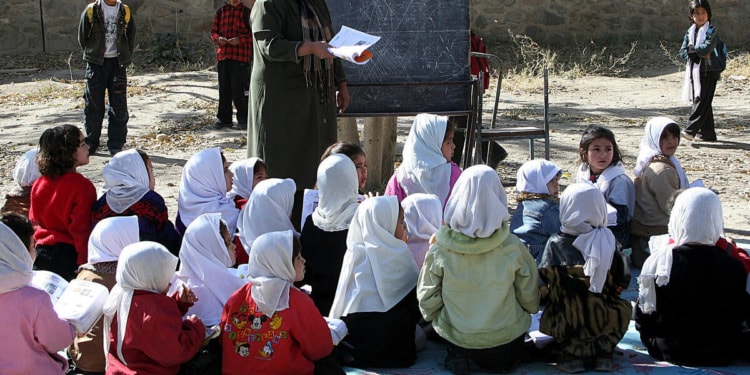Having increased by six million since 2021, the number of children not attending school is now 250 million. These are the findings of the latest UNESCO 2023 Global Education Monitoring (GEM) Report.
The global number of out of school children has risen by 6 million since 2021 and now stands at 250 million!
This result undermines the @UN’ goals for #education.
We must do more! https://t.co/G4nZ4uRqop #EverySchoolDayCounts #GloablGoals #UNGA pic.twitter.com/uBso0zTSTf
— UNESCO 🏛️ #Education #Sciences #Culture 🇺🇳 (@UNESCO) September 18, 2023
One of the contributing factors to the increase was the exclusion of girls and women from education in Afghanistan. In fact, since September 2021, all Afghan girls over 12 have not been allowed in school.
The Taliban government took hold of the country in the summer of 2021. In September 2021, the government announced they would re-open schools for boys but not for girls. As a result, 2.5 million Afghan girls and young women are now out of school.
Today marks two years since girls were banned from attending secondary school in #Afghanistan.
Their future is at stake. Their #RightToEducation must be respected.
Our message is clear: #LetAfghanGirlsLearn!https://t.co/Li7FgBKB2X pic.twitter.com/tnqR9RHZW1
— UNESCO 🏛️ #Education #Sciences #Culture 🇺🇳 (@UNESCO) September 18, 2023
Although this event has impacted the results of UNESCO’s report, the increase, as the UN writes, “can also be attributed to broader stagnation in education provision worldwide.”
Sustainable Development Goal 4: Education for All
Ensuring all — men and women — have access to quality education by 2030 is the fourth of 17 United Nations Sustainable Development Goals, the “blueprint for peace and prosperity for people and the planet” adopted by all Member States in 2015.
Moreover, last year, 141 countries committed to the UN Transforming Education Summit to accelerate the achievement of SDG 4. Their commitments included advancing teacher training, increasing investments in education, and increasing the budget for financial support and school meal provision.
According to the UNESCO report, the number of children in school has increased between 2015 and 2021. The completion rate rose from 84% to 87% in primary school, 74% to 77% in lower secondary education, and 54% to 59% in upper secondary education
Related articles: The Challenge of Universal Education: The Bridge Model and How it Works | The Importance of Right of Children to Free and Compulsory Education Act | The Challenge of ‘Quality Education’
Another insufficiently positive increase highlighted in the report concerns gender parity: For every 100 young men completing secondary school globally, 105 young women achieved the same level of education in 2021 as opposed to 102 in 2015.
While the situation improved in sub-Saharan Africa as well, the region still has the highest gender disparity in education, with just 88 young women completing secondary school in 2021, compared to 84 in 2015, for every 100 young men.
Other statistics do not give a bright overview either: The number of children in early childhood remained steady at 75%, and the number of illiterate adults in sub-Saharan Africa increased by 9 million between 2015 and 2021.
Evidently, even before progress started reversing in 2021, more action was needed. According to UNESCO’s report, if countries were aligned with SGD4 targets, 6 million more children would be in early childhood education, and 58 million more children, adolescents, and youth would now be in school.
“While considerable efforts were made over the past decades to ensure quality education for all, UNESCO data demonstrates that the number of children out of school is now rising,” UNESCO Director-General Audrey Azoulay stated.
“Education is in a state of emergency,” Azoulay added. “States must urgently remobilize if they do not want to sell out the future of millions of children.”
Achieving SDG4 by the deadline will be hard: One child would need to be enrolled in school every two seconds until 2030; in total, 1.4 million children would need to enter early childhood education every year. Finally, there would need to be a tripling of primary completion rates each year, the UNESCO report found.
Editor’s Note: The opinions expressed here by the authors are their own, not those of Impakter.com — In the Featured Photo: UNICEF supplies the Zarghuna Girls School with educational supplies, teachers’ training, and assists in repairing the infrastructure, Kabul, Afghanistan. Featured Photo Credit: UN Photo/Eskinder Debebe.














